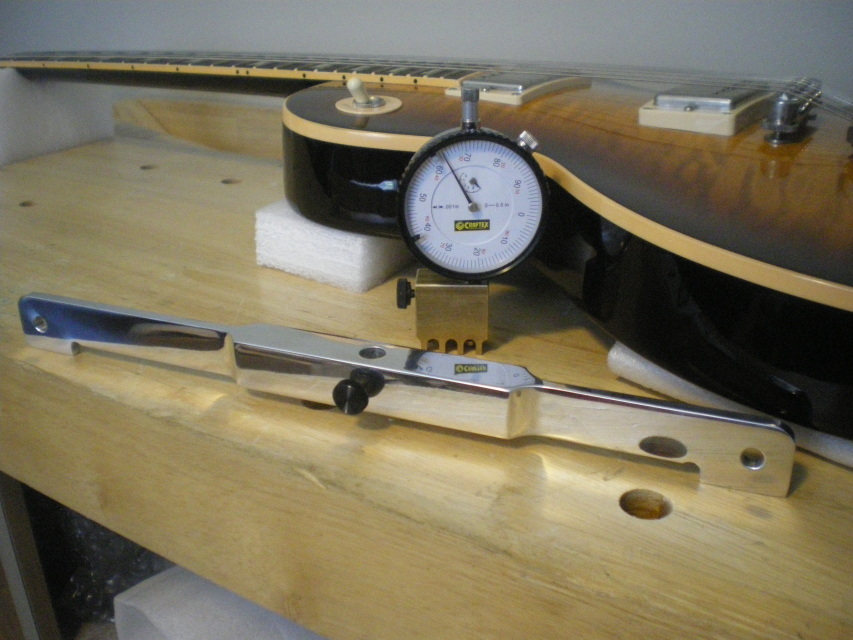Neck Relief Gauge and Nut Slotting Gauge
SKU:
CA$145.00
CA$145.00
Unavailable
per item
Sold out
Nut Slotting Gauge is machined from a brass for use on most guitars and other string instruments,but not for bass guitars.It has a radius on the bottom, so it can sit steadily on the fret board (a necessity,it would rock on it if machined flat.) The Dial Indicator in this combo is modified, so it doesn't put too much pressure on guitar strings, causing a string deflection (as lots of theese gauges available on the market do).
It measures the heights of the strings over the first fret, so you can cut nut slots accurately to a desired depth.
The Neck Relief Gauge is made of machined aluminum and is well balanced, for an easier use. It can measure a neck relief precisely, when used properly, allowing you to adjust the truss rod precisely. Each guitar player has a different preference depending on their style. With this tool, it is easy to put that preferential adjustment to multiple guitars. It has to be calibrated before use on a perfectly flat surface and the dial set to show "0". ( I would like to hope that every luthier has a strait edge in his or her toolbox:).
It is made to fit multiple instrument scales and the neck relief can be measured on 6th or 5th fret (for shorter scale instruments.)
There is some confusion up there ,why it should be measured on 6th fret and not in the middle (11th or 12th fret).
This Luthier explains it real good in his YouTube video:
It measures the heights of the strings over the first fret, so you can cut nut slots accurately to a desired depth.
The Neck Relief Gauge is made of machined aluminum and is well balanced, for an easier use. It can measure a neck relief precisely, when used properly, allowing you to adjust the truss rod precisely. Each guitar player has a different preference depending on their style. With this tool, it is easy to put that preferential adjustment to multiple guitars. It has to be calibrated before use on a perfectly flat surface and the dial set to show "0". ( I would like to hope that every luthier has a strait edge in his or her toolbox:).
It is made to fit multiple instrument scales and the neck relief can be measured on 6th or 5th fret (for shorter scale instruments.)
There is some confusion up there ,why it should be measured on 6th fret and not in the middle (11th or 12th fret).
This Luthier explains it real good in his YouTube video:









